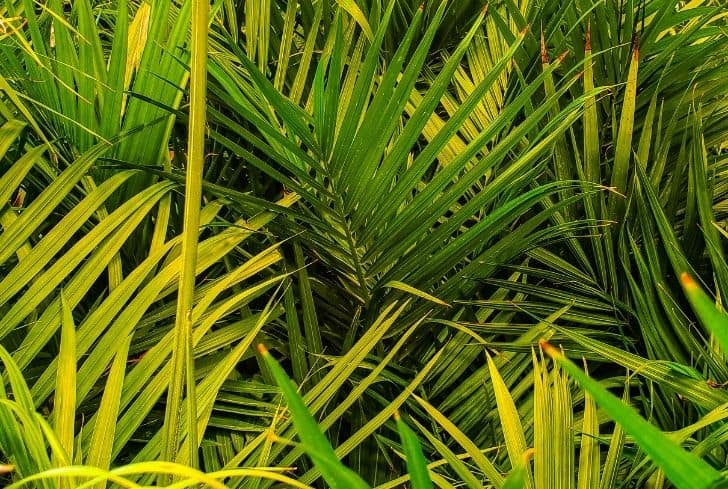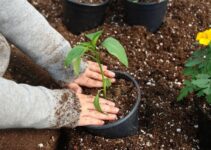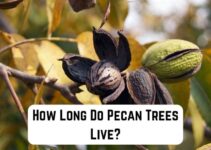Majesty palms are beautiful plants found abundantly in tropical regions. You would especially notice them for their full green foliage and their attractive fonds. But while these plants are mostly hardy, in some situations they may not survive and tend to dry up.
This is especially common when the plant is left for extensive periods outdoors during the winter months. Because even a sudden dip in temperature can be detrimental for the plant, your first step would be to check the temperature and make sure it is optimal.
In the following few sections of this article, we will share some additional tips that will help you save the day in case you find your Majesty palm dying.
What Should You Do if Majesty Palm is Dying?
One of the first signs of a dying majesty palm is browning palm fronds and drooping leaves. If this is the case with your plants, you might want to check the following additional factors to prevent your plant from drying up and subsequently dying.
- Keep the soil moist but make sure it is not fully saturated with water as it may contribute to the rotting of roots, thus causing the plant to die.
- If you don’t live in a tropical or humid area, create one for your plant by spraying water on the leaves regularly. You can also mist the plant as an alternative.
- If humidity seems to be a pressing concern, make sure you have a portable humidifier in proximity to the plant.
- Observe the plant and make sure it is not bit by insects or spider mites. If an insect bite happens to be the primary concern, you may need to follow corrective measures to stop it.
- During your watering sessions, always make sure the soil is moist but not overflowing with water. Avoid letting the soil completely dry in any situation.
- Use quality soil for potting the plant. These types of soil ensure that water is drained the earliest.
- Regardless of the season, make sure your palm receives bright sunlight all way round.
- If needed, you might want to add a fertilizer with a slow-release formula for your plant
- Get rid of the dead fronds
Once you follow these tips, your plant is likely to get better. But in case that still doesn’t help, here are some additional tips to consider.
How to Know When a Majesty Palm is Dying?
Now that you know how to treat your Majesty palm in case it is dying, you probably want to learn the first signs of the plant drying up. In this section, we will learn the factors you need to check for a better understanding of your Majesty palm will thrive or ultimately die.
One of the easiest ways to check if your plant is dying is by thoroughly assessing the different parts of the plant. Here’s what you need to check.
Fronds: Make sure the fronds of your palm aren’t spotted or even brown. Check this right after planting your palm. You should also check if the frond tends to drop more frequently. This is one of the biggest indications of a potentially dying palm.
If your palm is healthy, it will have green fronds and it is absolutely normal as they assume a yellowish hue with maturity.
Trunk: This is another thing you want to check. Although Majesty palms do not have woody trunks, you should still feel it and check if any spot is softer than usual. Tap the trunk and check if you hear any sound.
If you hear a hollow sound, it is indicative of a dying plant. This usually happens due to fungus that ends up infecting your tree causing it to dry out and die.
Buds: If your majesty palm shows signs of bud growing at the trunk top, you are safe, and the plant is probably not dying. You would want to look out for these buds during the growing months of summer and spring.
If you do not find them, it is probably because your tree is dying.
Note: If you find either of these conditions in your palm tree, it is probably indicative that your tree isn’t in good health. Act quickly and try to revive the palm by changing the soil condition, getting rid of the fungus, and allowing it to thrive at optimal temperature.
Should I Cut Off Brown Palm Leaves?
If your palm tree has any leaf or frond that appears fully dried out, it indicates that the frond has died. Try to pull off these leaves and fronds as they are detrimental to the healthy growth of the plant.
In case you find some fronds that are mostly yellow with hues of green, you can leave them as is. The green bit indicates that your palm is still getting the nutrients it needs.
While pulling out the leaves and fronds follow a proper and consistent pattern. The idea is to start from the bottom of your plant’s trunk and then give a gentle pull to the brown leaves. If the leaf or frond is already dead, you can remove it conveniently. Avoid hard tugs as they might affect the other leaves of the plant.
For better results, you also want to trip the leaf tips. This will leave you with a more attractive and well-maintained palm tree.
Can Brown Palm Leaves Turn Green Again?
If the leaves of your palm trees have already turned brown, it indicates that they are already dead. In this case, the plant won’t turn green. That is why we recommended cutting or removing the dead fronds or leaves from your palm tree in the previous section.
In case you only find two or three leaves with a brownish hue, try to remove the brownish part, keeping the yellow and the greenish leaves as is. Like we already mentioned, you can certainly trim your leaves targeting the grown tips.
To make the process smoother, use clean and high-quality shears. Make sure the cuts are proper and even. Although this won’t magically transform your dead palm leaves or make them any greener, getting rid of the dead parts will boost your plant growth and help it thrive better.
Why are My Potted Palms Turning Yellow?
Your potted palms can assume a yellowish hue due to a variety of reasons. Here’s a brief list for better understanding:
Frond Tips
If you find the frond tips of your palm tree assuming a yellowish hue it is probably because you overwatered the plant. You want to check the moisture level by touching the soil.
In case the soil appears dry, add some water. Additionally, ensure that the soil is well-draining because excessive moisture might lead to rotting of the plant roots.
Yellow fronds
If you find the fronds of your palm trees assuming a yellowish hue, it is probably because they lack nutrition. To avoid this condition, apply a quality fertilizer to your palm daily. Majesty palms, n particular, require copious doses of fertilizers once in a fortnight.
Lower fronds
As you already know, Majesty palms are a tropical plant, and they enjoy natural sunlight as well as a fairly warm growing condition. In case the lower part of the fronds assumes a yellowish hue, it is probably because that part isn’t receiving the proper amount of light.
In the majority of the cases, lower fronds become yellow when they do not receive direct sunlight. That is why you need to make sure your Majesty Palm receives at least 7 to 8 hours of uninterrupted sunlight.
If you have an indoor palm experiencing the same issue, try using a heat lamp to boost the lighting situation.
Why is My Majesty Palm Drooping?
If your Majesty palm is drooping it is probably because the trunk has rotted. As mentioned in the previous section, try to observe the tree better and identify any soft spot or additional spot that oozes liquid. These are some of the first signs of fungal infection that seem to get worse in humid environments.
To prevent your palm trees from drooping, you should also add ample water and examine the root system. Avoid overwatering as it might cause the roots to get soggy. At times, roots tend to rot because of improper drainage that prevents water from reaching other parts of the tree.
Do Majesty Palms Attract Bugs?
Yes, Majesty Palms welcome a bunch of bugs including spider. That is why it is crucial to check your fronds for any signs of spider mites. If you find these mites, wash them off with warm water with neutral soap. This should do the trick in most cases.
You should also examine the leaves frequently to avoid bugs from feeding in on them.
Now that you know what to do to keep your Majesty palms safe, we are certain that your plants will be healthy for the longest time. Just follow our guidelines and keep your plant safe from dipping temperatures and pesky insects. Once you incorporate these two major guidelines, keeping your palm safe will be even easier.






